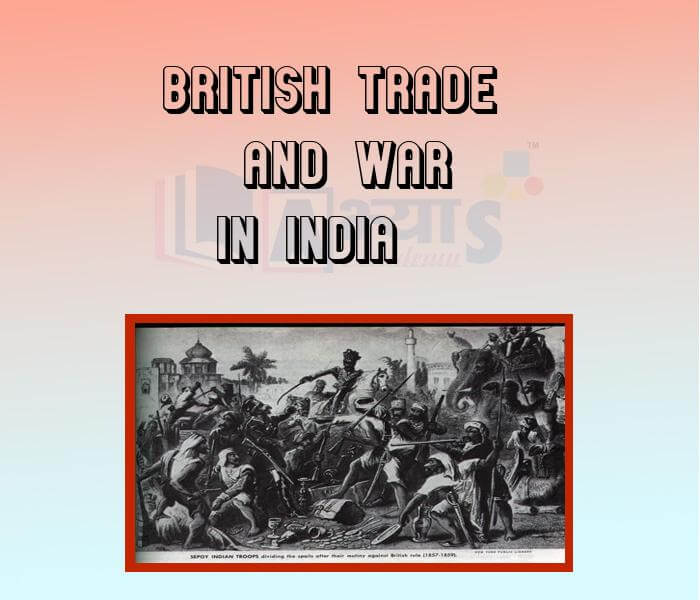British Trade and War in India









British Trade and War in India
How Trade Led To Battles: After the death of Aurangzeb, the Bengal nawabs asserted their power and autonomy, as other regional powers were doing at that time. Murshid Quli khan was followed Aliwardi Khan and then Sirajuddaulah as the nawabs of Bengal. Each one of them was a strong ruler. They refuse to grant the company concessions , demanded tributes for the company’s right to trade, denied it right to mint coins, and stopped it from extending fortification.
Accusing the company of deceit, they claimed that the company was depriving the Bengal’s government o huge amounts of revenue and undermining the authority of nawabs. It was refusing to pay taxes, writing disrespectful letters, and trying to humiliate the nawabs and his officials.
The Carnatic wars were a series of battles fought between the English and the French ,for the control of the trading posts of India, during the years 1746 to 1763. These wars were driven by opportunism on all sides and though the native princes did nor want to surrender their territory to an outside power, they often cooperated willingly with European to strengthen their own position.
The first Carnatic war(1746-48): The headquarters of the French trading company were in Pondicherry and that of the english at Madras (Fort st.George). the trouble erupted between the two countries at Arcot, capital of Carnatic , situated between Pondicherry and Madras.
The second Carnatic war (1749-54): The French collected revenue from the Nizam of Hyderabad for providing him protection .But in reality , the revenue was utilized for maintaining the French Army.
The Third Carnatic war (1756-63): The British defeated the French comprehensively. By the end of the Third Carnatic War, the French retained only Pondicherry and Chandernagore, and they were not allowed to fortify even these. The British were now the main European power in India .
Students / Parents Reviews [10]
It has a great methodology. Students here can get analysis to their test quickly.We can learn easily through PPTs and the testing methods are good. We know that where we have to practice

Barkha Arora
10thMy experience with Abhyas academy is very good. I did not think that my every subject coming here will be so strong. The main thing is that the online tests had made me learn here more things.

Hiya Gupta
8thMy experience was very good with Abhyas academy. I am studying here from 6th class and I am satisfied by its results in my life. I improved a lot here ahead of school syllabus.

Ayan Ghosh
8thIt was good as the experience because as we had come here we had been improved in a such envirnment created here.Extra is taught which is beneficial for future.

Eshan Arora
8thA marvelous experience with Abhyas. I am glad to share that my ward has achieved more than enough at the Ambala ABHYAS centre. Years have passed on and more and more he has gained. May the centre flourish and develop day by day by the grace of God.

Archit Segal
7thI have spent a wonderful time in Abhyas academy. It has made my reasoning more apt, English more stronger and Maths an interesting subject for me. It has given me a habbit of self studying

Yatharthi Sharma
10thOne of the best institutes to develope a child interest in studies.Provides SST and English knowledge also unlike other institutes. Teachers are co operative and friendly online tests andPPT develope practical knowledge also.

Aman Kumar Shrivastava
10thIt was a good experience with Abhyas Academy. I even faced problems in starting but slowly and steadily overcomed. Especially reasoning classes helped me a lot.

Cheshta
10thAbout Abhyas metholodology the teachers are very nice and hardworking toward students.The Centre Head Mrs Anu Sethi is also a brilliant teacher.Abhyas has taught me how to overcome problems and has always taken my doubts and suppoeted me.

Shreya Shrivastava
8thBeing a parent, I saw my daughter improvement in her studies by seeing a good result in all day to day compititive exam TMO, NSO, IEO etc and as well as studies. I have got a fruitful result from my daughter.
